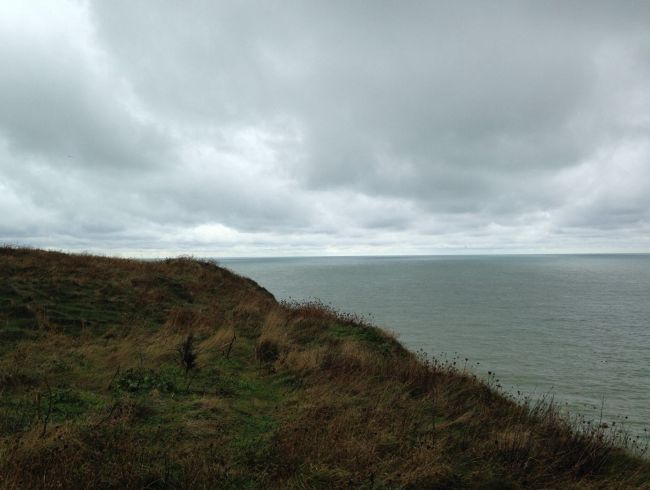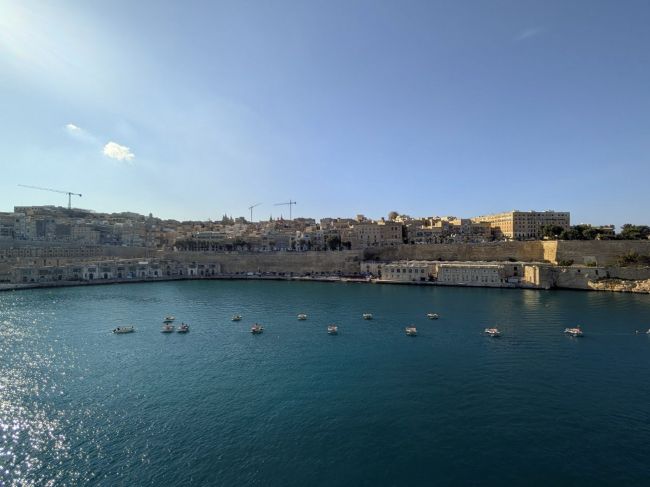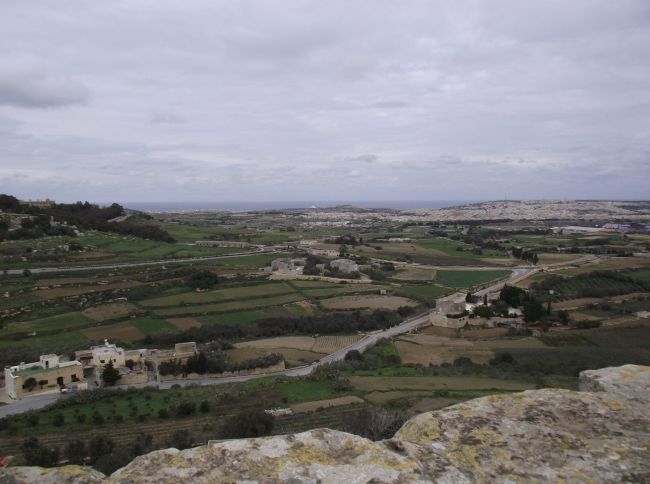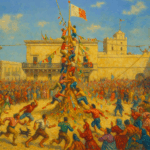| Malta Short Let: Cozy Stay in Gzira | |
|
Sliema Area Modern Designer Finished 2 Bedrooms + Games Room. First floor with Maltese Balcony Large back Terrace with swinging sofa Fully Airconditioned + Full Kitchen 3 TVs, including 65” with backlight. |
 |
|
Book Now: Google Travel | Direct (Cheapest) | Booking.com | Airbnb |
|
Mild Winter Sun & Fun Without the Crowds
Visiting Malta in February offers a cool, calm way to explore this Mediterranean gem without the summer crowds. It’s one of the coldest months by Maltese standards, but still mild compared to Northern Europe.
If you’re dreaming of a winter getaway with cultural adventures, scenic hikes, and vibrant local festivals (and don’t mind the chance of a rainy day), Malta in February might just be perfect for you.
This guide covers what to expect – from weather and packing tips to events and family-friendly activities – so you can make the most of a February holiday in Malta. For tips on getting there, check our winter 2024-2025 flight schedule to Malta or save on flights with our 25 insider tips for flight booking. For more travel inspiration, visit our Malta Travel Guide 🌍.

Table of Contents
- Key Points: Malta In February 📊
- Why Visit Malta in February? ☀️
- Weather in Malta in February 🌦️
- February Events and Festivities 🎉
- Things to Do in Malta in February 🏛️
- Accommodation and Travel Tips 🏡
- Pros and Cons of a February Visit ⚖️
- Final Thoughts: Is February a Good Time for Malta? 🤔
- The Maltese Won’t Tell You (But We Will) 💡
- Sources 📚
February vs. Summer: A Quick Look 📊
| Feature | February | Summer |
|---|---|---|
| Temperatures | 13–16°C, crisp breeze | 30–35°C, humid heat |
| Crowds | Light | Heavy |
| Prices | Low | High |
| Parking | Easy | Often impossible |
| Events | Carnival, local feasts | Festivals, beach clubs |
| Photo Ops | Wildflowers, empty alleys | Blue lagoons, sunsets |
| Comfort | Layer-friendly | Hot, sunscreen required |
Pros and Cons of visiting Malta in February
| 👍 Why Visit Malta in February | 👎 What to Keep in Mind |
|---|---|
| 🏷️ Low Prices – Flights and accommodation are far more affordable than peak season. | 🩱 Too Cold to Swim – Sea temps around 15–16°C; not ideal for beach lounging. |
| 👨👩👧👦 Fewer Crowds – Have top attractions, alleys, and cafés almost to yourself. | 🌧️ Unpredictable Weather – Sudden showers or gusty winds can alter plans. |
| 🌼 Wildflower Season – Lush countryside and vibrant blooms make hikes and photos magical. | 🌬️ Chilly Indoors Without Heating – Make sure your stay includes heating and a dehumidifier. |
| 🎭 Local Events – Carnival, village feasts, and cultural surprises like chocolate festivals. | 🎉 Less Nightlife Buzz – Party scene is quieter; bars and clubs more subdued. |
| 🍲 Hearty Winter Cuisine – Minestra, kawlata, prinjolata — warming dishes with local soul. | 🛳️ Limited Tours to Comino/Blue Lagoon – Some boat trips paused or weather-dependent. |
| 📷 Photographer’s Dream – Golden hour light + fewer people = unreal shots of Malta’s magic. | ☀️ Shorter Days – Sunset around 5:30pm means less daylight for exploring. |
| 🚗 Easy Parking & Driving – Less traffic, more parking (even in Valletta!). | 🧭 Some Attractions on Shorter Hours – A few museums or tours may close earlier. |

Why Visit Malta in February? ☀️
February is firmly off-season in Malta, which comes with some big perks for travelers. You’ll enjoy lower prices on flights and accommodation, plus quieter streets and attractions. Popular sites that teem with tourists in summer – like the fortified city of Mdina or the capital Valletta – are far more peaceful now. In fact, it’s a great time to explore these historic places at a leisurely pace without fighting crowds. Parking is easier, restaurant reservations aren’t necessary, and even beaches are empty and coastal trails serene. Learn more about Mdina’s charm in our guide to Mdina’s lesser-known gems. To save on your trip, see our flight booking tips.
Malta’s countryside comes to life in winter: after the autumn rains, fields are green and wildflowers bloom everywhere. Locals often spend sunny weekends hiking in nature or enjoying long lunches by the sea. As a visitor, you can soak up an authentic slice of Maltese life – whether it’s chatting with locals at a quiet village café or joining in a seasonal festival. Families will appreciate the relaxed atmosphere and the fact that Malta’s major museums, restaurants, and attractions stay open year-round (especially around Valletta and main towns). If you have a school break in February, Malta offers an affordable family trip with a mix of fun and learning, minus the peak-season chaos. Check out our guide to things to do in Malta with kids for family-friendly ideas.
Lastly, February in Malta still feels like an early spring on many days. You might trade the bitter cold of home for afternoons sipping coffee al fresco in the sun. In short, if you’re a cultural explorer, nature lover, or budget-conscious traveler seeking mild weather, February is a fantastic time to visit Malta. Just come prepared for a bit of everything, weather-wise! For more details, check out our guide on visiting the Mediterranean in February.
Weather in Malta in February 🌦️

Malta’s winter climate is mild but variable. In February, daytime temperatures average around 13–16°C (55–61°F), with overnight lows around 8–10°C. That might feel balmy if you’re coming from a colder country – 14–17°C afternoons can seem almost warm when the sun is out. Indeed, on sunny days in sheltered spots, it might feel like late spring (one visitor reported hitting the beach in mid-February when it reached 18°C, though locals in puffy jackets looked on!). However, don’t pack your swimwear just yet. Sea temperatures hover at 15–16°C (59–61°F) – the coldest of the year. Most Maltese won’t dare a swim in February, and the water will feel brisk unless you’re very brave. For beach alternatives, explore our map of beaches in Malta.
Sunshine & Daylight: February days are already a bit longer than January, with about 11 hours of daylight and roughly 6–7 hours of sunshine on average. The sun rises around 6:30–7:00am and sets by about 5:30pm, gradually extending as the month progresses. When the sun shines, it can be gorgeous – crisp blue skies and shimmering sea. People do sit outside for lunch or coffee on nicer days, making the most of the gentle winter sun. UV levels are modest (index ~3-4), but you might still catch a light tan or even a sunburn if you’re out for hours, so bring sunglasses and a bit of sunscreen.
Rain & Wind: The Maltese have a saying for February: “Frar fawwar jimla l-bjar,” meaning “February’s floods fill the wells.” While that exaggerates a bit, February does see some rain – about 60–63 mm over 12 or so rainy days on average. The pattern is usually short, scattered showers rather than endless drizzle. You likely won’t get continuous all-day rain, but a few times a week a fast-moving downpour could pass through. It’s wise to carry a small umbrella or have a waterproof jacket handy for those “just in case” moments. Also note, Malta can be windy in winter. Cool breezes (15–20 km/h on average) are common, and after a storm the gusts can make it feel colder. The humidity is high (around 75–80% relative humidity), which means the damp “cold gets in your bones,” as locals say. Even if the thermometer reads 10°C, it can feel chillier in the wind, especially by the coast.
In summary, pack for mixed weather. In the same week you might get brilliant sunshine, blustery winds, and a couple of showers. Layers are key: a light jacket or puffer, a couple of sweaters, and long pants will serve you well. Bring a hooded raincoat or travel umbrella (sturdy enough for wind). Inside buildings, note that Maltese homes often lack central heating, so that damp chill can creep in. But hotels and rentals usually have heating or AC units these days. If you’re staying in a local apartment, confirm it has a heater – it’ll make your evenings much cozier. And don’t forget your sunglasses; even winter sun in Malta is bright and cheery! For more packing tips, see our Malta packing list.
For a detailed breakdown of what to wear and pack, see our Malta February Weather & Packing guide.
February Events and Festivities 🎉
Despite being a winter month, February in Malta is packed with events that add color and excitement to your visit. Two major highlights dominate the calendar: Carnival and the Feast of St. Paul’s Shipwreck. There’s also Valentine’s Day for those feeling romantic, and even a popular sporting event. Here’s what you need to know:
- Carnival (Il-Karnival): Late February is Carnival time in Malta, celebrated during the five days before Lent. This is one of the most anticipated events of the year. Valletta is the epicenter of festivities: the streets fill with vibrant floats, marching bands, dancers, and revelers in wild costumes. It’s a very family-friendly affair in Valletta – kids and adults alike dress up, eat sweet carnival pastries, and enjoy the playful atmosphere. Nighttime parade floats are lit up with neon colors, creating a magical scene. Over on Gozo, the village of Nadur hosts its own notorious carnival. The Nadur celebrations are spontaneous and decidedly quirky – locals don grotesque or satirical costumes and roam the streets in an unrehearsed parade. (Be warned: the Nadur carnival is known for dark humor and can get rowdy – it’s not the best for young kids, and it draws huge crowds of party-goers.) If you’re visiting during Carnival, joining the fun is a must to experience Malta’s playful side. Plan accordingly: the dates change each year (linked to Lent/Easter), sometimes falling in early March. In 2025, for example, carnival week spans late February. Expect some traffic or ferry delays if you’re heading to Gozo for Nadur’s events – thousands attend, so book any accommodation or transport in advance if needed. For more on Malta’s cultural events, check our calendar of cultural events.
- Feast of St. Paul’s Shipwreck (Feb 10): This is a national public holiday and an important day in Malta’s cultural calendar. It commemorates the shipwreck of Saint Paul in 60 A.D., which, according to tradition, brought Christianity to Malta. The main celebrations are in Valletta, home to the church of St. Paul’s Shipwreck. On February 10th, you can witness a traditional festa: a festive procession through the streets with a statue of St. Paul, accompanied by marching bands, ringing church bells, fireworks, and food stalls. It’s a wonderful chance to see an authentic Maltese religious festival outside of the usual summer festa season. The atmosphere is joyful and reverent at once – locals pack the streets to honor their patron saint. As a visitor, you’re welcome to watch the procession and enjoy local treats (like fresh imqaret date pastries) sold by vendors. Just check the schedule in Valletta on the day, and be respectful of any religious activities in the churches. For more on St. Paul’s historical significance, see our guide to St. Paul’s Islands.
- Valentine’s Day: February 14th is of course Valentine’s, and Malta has no shortage of ways to celebrate with your loved one. While not a local tradition per se, many hotels and restaurants offer special dinners or spa packages for couples. You could plan a romantic dinner in a top restaurant (Valletta and St. Julian’s have many fine dining spots), or take a stroll through Mdina or the Barrakka Gardens for a scenic sunset view. Even if you’re not big on Hallmark holidays, it’s a nice excuse to enjoy Malta’s charming ambiance. Valletta, with its historic architecture and cozy wine bars, is especially lovely for a date night. And if you want something unique, consider a harbor cruise or a visit to the beautiful Upper Barrakka Gardens followed by a cafe stop – simple and sweet. Valentine’s is low-key in Malta, but it adds a dash of romance to the month. For romantic trip ideas, see our 3-day romantic Malta itinerary.
- Malta Marathon: Active travelers might be interested in the Malta Marathon (and Half Marathon), typically held in late February. It’s the island’s biggest annual race, drawing local and international runners. The route usually goes from Mdina down to Sliema, offering a scenic run through towns and countryside. Even if you’re not running, you might catch the excitement as a spectator – or just be aware of some road closures on race day. (In 2024 the marathon was in late February; check exact dates if you plan around it.)
Things to Do in Malta in February 🏛️
One thing’s for sure: you won’t be bored in Malta, even in winter. In fact, the cooler weather makes many activities more enjoyable than in the scorching summer, and you’ll have more of the island to yourself. Here are some of the best things to do in Malta in February, or check our dedicated Things to Do in Malta in February guide for more inspiration.
- Explore Historic Cities & Sites: This is the perfect time for sightseeing and cultural exploration. Wander the atmospheric streets of Valletta, Malta’s capital, visiting its museums and Baroque landmarks without the rush. Don’t miss St. John’s Co-Cathedral, where you can marvel at Caravaggio paintings in peaceful silence rather than shoulder-to-shoulder crowds. The old capital Mdina (the “Silent City”) is also wonderful now – its narrow lanes are serene, and you can actually appreciate the architecture and views at your own pace. Consider a trip to the Three Cities (Vittoriosa, Senglea, Cospicua) across the Grand Harbour; their waterfronts and fortifications are lovely to stroll in cool weather. If you’re a history buff, use a rainy day to tour indoor sites like the Grandmaster’s Palace in Valletta or the War Rooms and museums – February offers ample time and space to soak up Malta’s rich history. For a deeper dive, check our guide to the Three Cities.
- Unique Sites: Take advantage of lower demand to visit the Ħal Saflieni Hypogeum, a 5,000-year-old underground temple complex (UNESCO World Heritage). Tours are limited and usually booked out months ahead in high season, but in February you have a better shot at scoring tickets. Also, sites like the Domus Romana (Roman villa) in Rabat, St. Paul’s Catacombs, or Fort St. Elmo are open year-round – all great options to delve into Malta’s past. Learn more about the Hypogeum in our guide to this underground wonder.
- Enjoy the Great Outdoors: With mild temperatures and green landscapes, February is ideal for outdoor adventures in Malta. Go for scenic hikes and walks – the islands offer dramatic vistas without the summer heat. Popular routes include the Dingli Cliffs trail, where you can walk along towering sea cliffs on Malta’s west coast. On a clear day you’ll get fantastic views of the open Mediterranean, and maybe even spot Gozo in the distance. Nature reserves like Buskett Gardens or Majjistral Park are also pleasant for a nature walk. The countryside is dotted with wildflowers and lush after winter rains, making every trek surprisingly picturesque for an arid island. If you’re based in the city, even a harbor promenade walk is lovely – try the Sliema to St. Julian’s seafront walk or a stroll in Spinola Bay. For a more rugged feel, hop on a ferry to Gozo for a day and explore its coastal trails.
Gozo in February is very laid-back; you could hike from Xlendi Bay to the Sanap Cliffs or visit the Ta’ Ćenċ Cliffs for stunning seascapes. (Just check ferry times and weather; high winds can temporarily disrupt ferry service, though it’s rare.) Beaches in Malta won’t be for sunbathing now, but they’re worth visiting for the scenery and solitude. Golden Bay, Mellieħa Bay, or pretty Hondoq Bay in Gozo are almost empty – perfect for a picnic or a brisk shoreline walk. Some intrepid souls even wade into the sea on warmer afternoons; if you do, know that 16°C water will be refreshing at best!
Tip: Dress in layers for outdoor activities. It might be cool when you start a hike, warm up by midday sun, and cool off again if a breeze kicks in. Also, wear sturdy shoes – winter rains can leave some paths muddy or slippery. For more outdoor ideas, see our multiday hiking guide. - Family-Friendly Attractions: If you’re traveling with kids (or are young at heart), Malta has several attractions that are great year-round. The Malta National Aquarium in Qawra is a hit on a cloudy day – it’s entirely indoors and lets you see sharks, rays, and all sorts of Mediterranean sea life up close. Little ones will also love the Playmobil FunPark, especially if they enjoy the famous toy figures (Malta is home to a Playmobil factory and theme park). Popeye Village, the whimsical seaside film set from the Popeye movie, is open in winter on a reduced schedule (often weekends only) – check ahead if it fits your itinerary, as it’s a fun photo spot and has play areas for children. Meanwhile, simple joys like bowling or a cinema outing are available in St. Julian’s (there’s a bowling alley and modern cinemas at Bay Street and Eden Cinemas).
February might also bring special performances – sometimes there are children’s theaters or traveling exhibits; keep an eye on local event listings. Importantly, Carnival in Valletta is very family-oriented. If you have kids, they will be delighted by the costumes, music, and floats. Many local families head to Valletta or Floriana to join the merriment, so don’t hesitate to bring the stroller or toddlers along (just bundle them up if it’s a chilly evening). It’s a rare chance for your family to experience a different culture’s traditions in a fun way. And if the weather turns sour, you can always duck into one of Malta’s interactive museums – for instance, the Esplora Science Centre in Kalkara is a hands-on science museum great for kids, open year-round. See more family activities in our guide for families. - Indoor Activities & Rainy-Day Ideas: On the occasional rainy or blustery day, Malta still has plenty to keep you entertained while staying dry. Aside from the museums already mentioned, consider art galleries – Valletta’s MUŻA (National Museum of Art) showcases both classic and contemporary Maltese art. There are also smaller galleries and historic houses (like Casa Rocca Piccola in Valletta) where you can get a peek into Malta’s aristocratic heritage. Church-hopping is another rewarding activity: step into opulently decorated churches such as Mosta Rotunda (with its massive dome) or any village parish church – they’re warm, free, and full of Baroque art and architecture. Feeling leisurely? Go shopping – Sliema has modern malls like The Point and Plaza, and Valletta’s Republic Street is lined with shops (note: winter sales often run through February).
Cafés and wine bars are everywhere; spend an afternoon with a hot drink and Maltese pastries (have you tried pastizzi yet? Those warm ricotta or pea filled pastries are perfect winter comfort food). Try making them yourself with our pastizzi recipe. Or treat yourself to a spa afternoon – a number of hotels offer day spa passes, which can be delightful if it’s stormy outside. And don’t underestimate simply people-watching in local haunts. Pop into a village band club bar or a neighborhood bakery on a weekday morning; you’ll catch a slice of authentic Maltese life – older gentlemen debating local politics over tea, or ladies buying ħobż tal-Malti (Maltese bread) from the corner store. These small cultural moments are easier to experience in the off-season when the pace of life is slower.
For an expanded list of attractions and activities, see our dedicated Things to Do in Malta in February guide, as well as our sample February itinerary for trip planning inspiration.

Accommodation and Travel Tips 🏡
Where to Stay: Because February is not peak tourist season, you can often find great deals on hotels and rentals. Whether you prefer a cozy boutique hotel or a spacious Airbnb apartment, prices will be considerably lower than in summer. To save even more, check our flight booking tips and winter flight schedule. If you’re coming with family or a group, this is an opportunity to snag a larger place (like a two- or three-bedroom seafront apartment) at a good rate – perfect for spreading out and having a comfortable home base.
For a great option, check out this Airbnb listing in Gzira, featuring a 2-bedroom apartment close to the Gzira Church with a large living room, sofa bed, fully equipped kitchen, a TV in each room, and good internet. Many accommodations also run special offers in winter (free nights, included breakfast, etc.), so shop around. As for location, it depends on your interests. If you want a lively atmosphere with lots of restaurants and easy transport, St. Julian’s/Sliema or Valletta are great choices – you’ll have plenty of dining options and indoor entertainment at your doorstep. Valletta is charming and central (ideal if you plan to museum-hop and bus around the island), while Sliema/St. Julian’s have more modern amenities and shopping.
For more on Sliema, see our Sliema guide. For a quieter, local feel, you could stay in a seaside town like Marsaskala or Marsaxlokk in the south, or Mellieħa or St. Paul’s Bay in the north. These areas are closer to nature and offer lovely coastal walks. Just note that resort towns will be very sleepy in winter – which some travelers absolutely love, but don’t expect nightlife or every cafe to be open early in the week. Most importantly, ensure wherever you stay has heating provisions (most do – either AC units or space heaters). Nights can be damp, and you’ll rest much better in a well-heated room. For more accommodation tips, check our Airbnb in Malta guide.
Getting Around: Malta’s buses run year-round, and February’s reduced traffic means public transport is relatively efficient (at least compared to summer). You can use the tallinja card or contactless payments on buses – an inexpensive way to explore. If you plan to hike or reach more remote spots, renting a car is an option; roads won’t be as congested in February, and parking is easier to find. Just be cautious driving after heavy rains – some low-lying streets can flood briefly (Malta isn’t well-designed for rain drainage). Also, winter storms can leave rock debris on coastal roads, so drive slowly in bad weather. The Gozo ferry operates normally throughout winter; a day trip to Gozo is straightforward, but try to avoid very windy days for the smoothest crossing. For travel planning, see our guide on how to get to Malta.
Dining & Nightlife: Most restaurants and bars remain open in winter, especially in tourist-friendly areas. In fact, this is the time when locals reclaim their favorite spots, so you’ll get a more genuine dining scene. You usually don’t need reservations except perhaps on Valentine’s Day or weekends at popular spots. Seasonal cuisine to try: winter is great for hearty Maltese dishes like rabbit stew (fenek) or lampuki pie (if any lampuki fish are still in season from autumn). You’ll also find warm soups like aljotta (fish soup) and delicious street foods like pastizzi to warm you up.
February is also peak citrus season – Maltese oranges and lemons are plentiful, so enjoy fresh-squeezed juice or desserts made from them. And of course, the carnival sweets – look for prinjolata, a carnival cake topped with cream and pine nuts, sold especially during carnival week. For more on Maltese cuisine, check our guide to food in Malta. Nightlife in winter is mostly centered around the weekends. Paceville (the club district in St. Julian’s) will still have activity, though much toned down from summer. If you fancy a night out, you’ll find bars with live music or DJs on Fridays/Saturdays. For a more relaxed vibe, seek out wine bars in Valletta or Mdina – many are set in historic cellars and make for a cozy evening of local vino and cheese platters. For wine lovers, explore our guide to wine tasting in Malta.
Pros and Cons of a February Visit ⚖️
To help you weigh things, here’s a quick summary of advantages and disadvantages of visiting Malta in February:
Pros:
- Mild Winter Climate: Enjoy a break from freezing temperatures – Malta offers sweater-weather days with sunshine and fresh sea air. Perfect for sightseeing without breaking a sweat.
- Lower Prices & Deals: Flights to Malta and hotels/Airbnbs are much cheaper than in high season. Great value for travelers on a budget or those wanting a nicer accommodation for less.
- No Crowds: Experience Malta’s attractions without tour groups clogging the view. Shorter (or no) lines at museums and sites, easy seating at restaurants, and a generally peaceful atmosphere.
- Cultural Events: February offers unique events like Carnival and the St. Paul’s feast that you can’t experience in summer. These colorful traditions give you a taste of authentic Maltese culture.
- Green Landscapes & Hiking: The islands are at their greenest. Countryside walks, cliff hikes, and scenic drives are especially beautiful now. The cool weather makes outdoor activities very comfortable.
- Family-Friendly Pace: The quieter pace and cooler weather can be easier for families with young kids (no heat exhaustion or overly crowded attractions to worry about).
Cons:
- Swimming Off the Table: If your dream is a beach vacation, February won’t provide it. The sea is too cold for most swimmers (15–16°C) and even sunbathing is hit-or-miss except perhaps a warm midday. Water parks and seasonal beach kiosks are closed. (Some hotels have indoor pools if you need a dip.)
- Weather Unpredictability: You have to accept the risk of rain and wind disrupting some plans. Outdoor excursions might need to be shuffled if a storm blows through. It’s wise to keep an eye on the forecast and have backup indoor plans for those days.
- No Summer Buzz: Those seeking a buzzing party scene or packed festivals won’t find them now. Nightlife is limited and many entertainment venues only come alive in summer. Also, no big music festivals or open-air events happen in February.
- Shorter Daylight: While improving, days are shorter than in summer (sunset by ~5:45pm in late Feb). Sightseeing time is a bit more limited each day, and some attractions keep shorter winter hours. You’ll want to start your days relatively early to maximize daylight for outdoor activities.
- Some Activities Not Running: Certain tourist activities are seasonal – e.g., boat trips to Comino’s Blue Lagoon are sparse in winter (and even if you go, you likely won’t swim). Likewise, things like open-top bus tours or harbor cruises may have reduced schedules. Always check winter timetables.
The Maltese Won’t Tell You (But We Will) 💡
- Dehumidifiers matter more than central heating
- Cheap umbrellas get destroyed in wind
- Wildflower season starts early — don’t wait for March
- Valletta’s magic lies in its winter stillness
- Rainy days clear quickly — always have a flexible Plan B
Final Thoughts: Is February a Good Time for Malta? 🤔
Yes – if you come with the right expectations, a February trip to Malta can be nothing short of magical. It’s an ideal time for travelers seeking a peaceful, intimate experience of the islands. You’ll interact more with locals than tourists, save money, and see a side of Malta that many summer visitors miss. Imagine exploring ancient temples like the Ħal Saflieni Hypogeum without a crowd, taking photos of postcard-worthy vistas free of people, and enjoying spontaneous chats with Maltese people who aren’t overwhelmed by high-season work. Those are the kinds of memories February can offer.
On the flip side, know that Malta in winter still feels like winter in its own way. You might need a jacket and umbrella rather than a swimsuit. But if you’re okay with that, you’ll be rewarded with plenty of sunny days and daytime highs that feel pleasant for outdoor adventures. When northern Europe is blanketed in grey, Malta often serves up blue skies and vibrant sunsets even in February. And if a fierce rainstorm rolls through, it usually passes quickly – often leaving a fresh, clear day in its wake.
In essence, February is off-season done right. Think of it as trading peak-season sizzle for a gentle simmer: the islands are quieter but still very much alive. You can tour all the famous sites (they’re open), savor Maltese cuisine, and join unique festivities like Carnival – all at a relaxed pace. Whether you’re a family with kids on a half-term break, a couple looking for a romantic getaway, or friends on a cultural trip, Malta offers something special in winter. For a detailed plan, see our sample February itinerary. For budget-conscious travelers, check our budget travel guide for families or solo traveler’s guide.
So, why wait? Pack your layers, embrace the adventure, and discover Malta beyond the beach. From the vibrant chaos of Carnival in Valletta to tranquil walks along the windswept Dingli Cliffs, February in Malta promises a rich tapestry of experiences. Savor the island’s history, indulge in hearty pastizzi, and bask in the warm hospitality of the Maltese people. This winter escape could become one of your most cherished holidays, filled with moments that linger long after you leave. Il-qagħda it-tajba! (Enjoy your stay!) For more planning tips, visit our trip planning guide and winter flight schedule.








